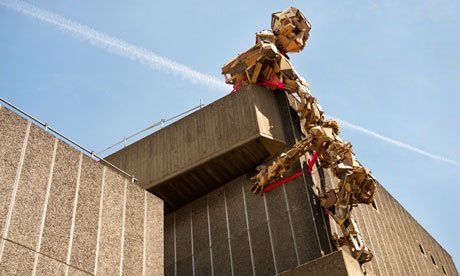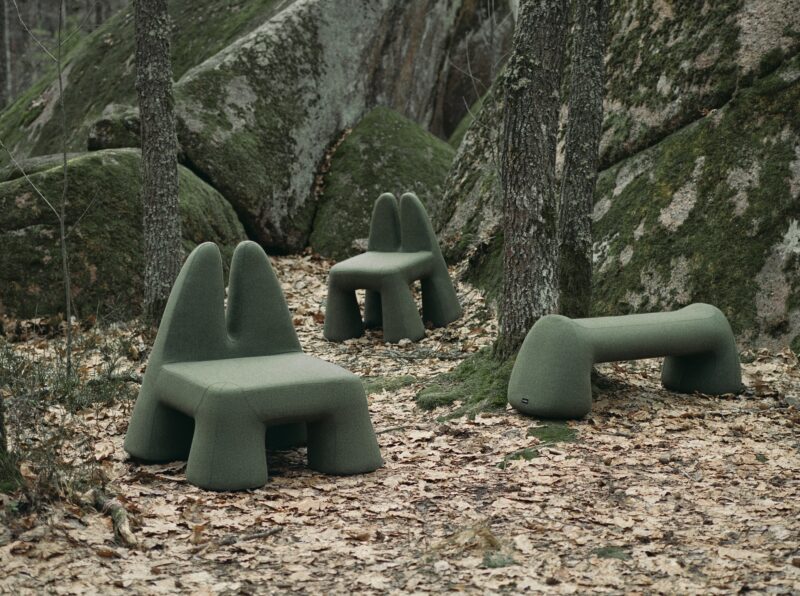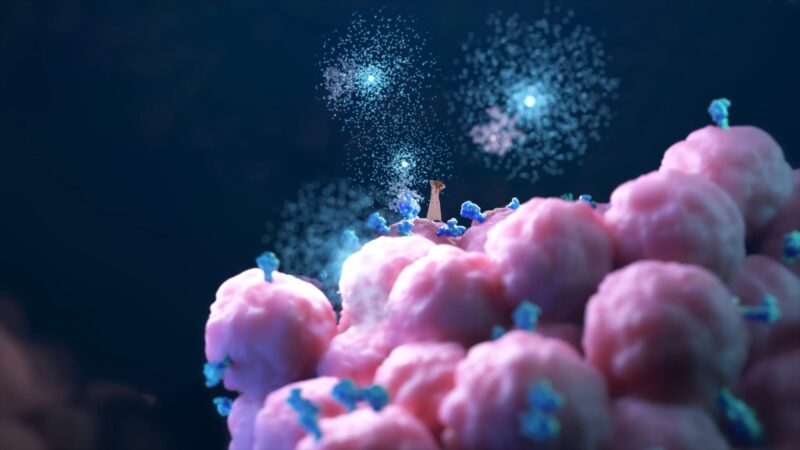Robots made of reclaimed timber scramble up the side of the Hayward Gallery at the Southbank centre. Photograph: Linda Nylind for the Guardian
The notoriously grey labyrinth of the South Bank is to be infiltrated with colour as international artists attack its concrete ledges, tunnels and terraces with flags, banners, robots, fabric trees, giant building-blocks, adobe houses and old plastic bottles, transforming the arts complex for the summer-long Festival of the World.
“If you do nothing else, smile,” the director Jude Kelly pleaded – standing a few feet from where the Korean artist Choi Jeong Hwa had wrapped hundreds of bright green plastic colanders around the grey columns, instantly transforming them into exotic plants.
Two giant wooden robots, made from reclaimed timber, are scrambling up the side of the Hayward Gallery, one of the grimmest corners is now festooned with stalagtites of old plastic milk bottles, and a 15-metre baobab tree, made from brilliantly coloured fabrics wrapped around plastic pipes, has sprouted beside Waterloo bridge.
The tree was made by Pirate Technics, the creators of last year’s giant straw fox. Its many fans will be delighted to hear the fox is still in good heart, and touring.
A few levels further up real trees are sprouting, hundreds of saplings grown from acorns collected from 7000 Oaks, a famous piece made by the late artist Joseph Beuys.
After the jubilee weekend, when thousands of visitors are expected to cram on to the riverside terraces to watch the flotilla – which will be greeted with a special semaphore message spelled out by a team of 30 dancers on the roof – more installations including a multicoloured beach will spill across the front.
The most spectacular transformation is of a grimy dungeon under the Queen Elizabeth Hall, never used since the hall was built in the 1960s except as storage space and a pigeon graveyard, which now, after 200 volunteers hit it with everything they could scavenge or scrounge has become a cafe and club space complete with green glass-bottle lamps and wheelbarrow armchairs.
It will house some events open to the public, but will also serve as a green room for the 4,000 artists taking part in the festival, including the heaving cornucopia of poets due to descend for Poetry Parnassus.
The five-day poetry event from late June will be the largest of its kind in the world, featuring poetry from all 204 competing Olympic nations, and more than 140 poets including the Nobel laureates Seamus Heaney and Wole Soyinka.
The scrambling robots are called Everything Is Beautiful When You Don’t Look Down – a fitting slogan for the festival and the summer, Kelly reflected.
guardian.co.uk © Guardian News & Media Limited 2010
Published via the Guardian News Feed plugin for WordPress.








